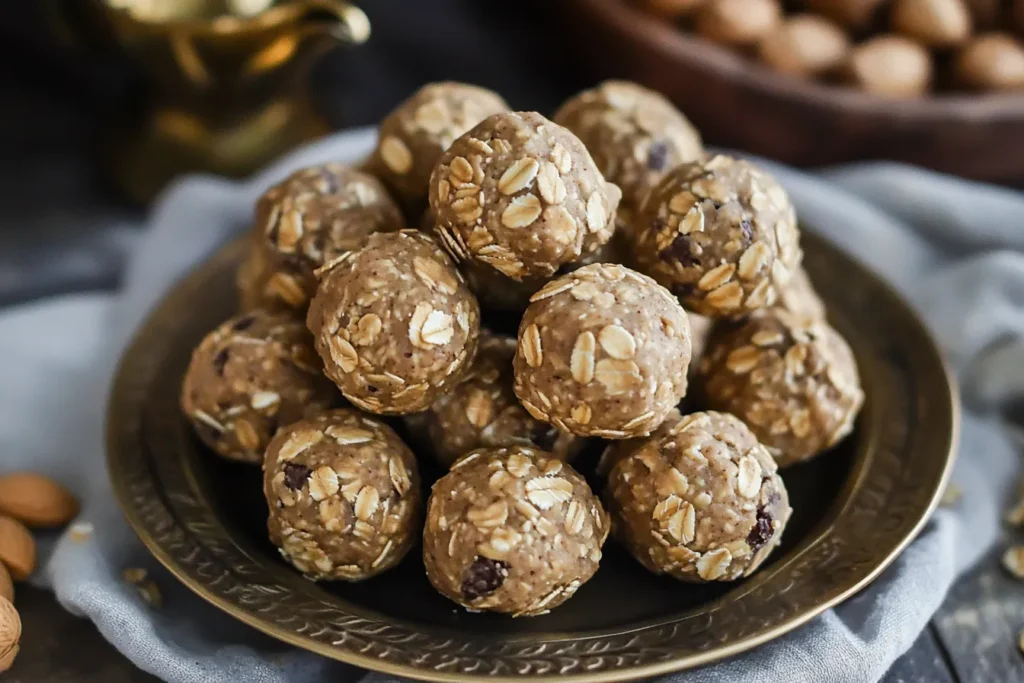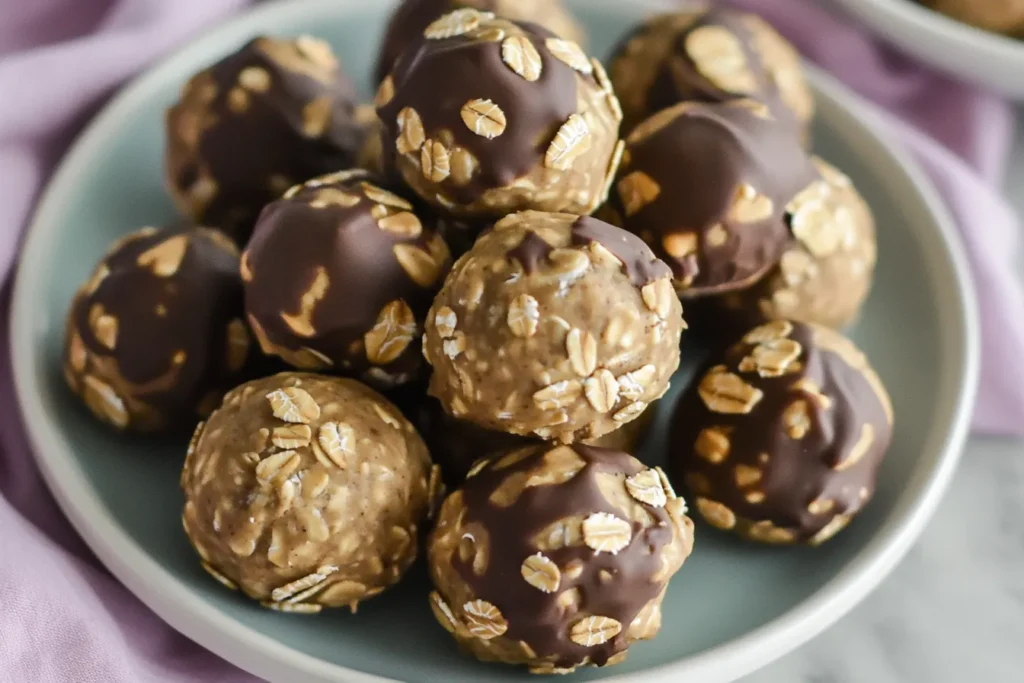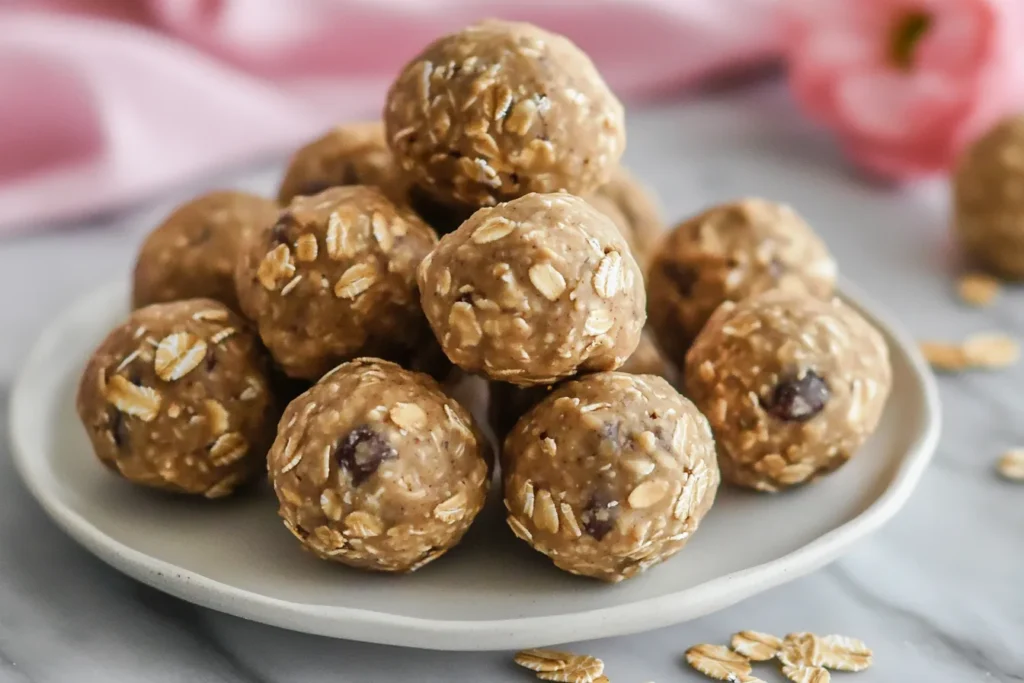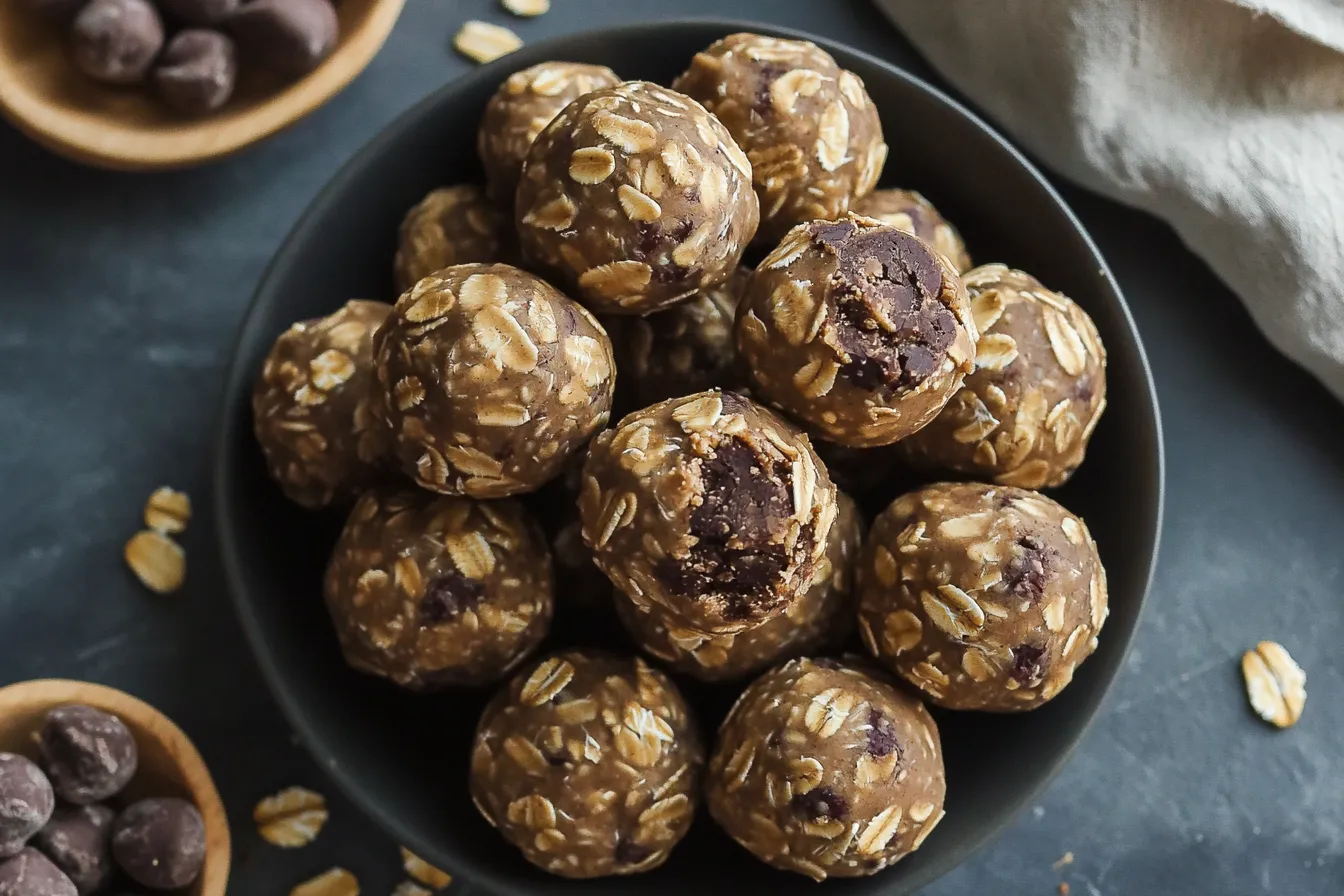Can I Eat Peanut Butter for Breakfast for Weight Loss? Peanut butter’s creamy texture and rich taste make it a popular choice. Learn about its nutritional value, weight loss benefits, and how to incorporate it wisely into your breakfast routine.
Understanding Peanut Butter and Its Nutritional Value
What Is Peanut Butter?
Peanut butter is a spread made from ground, roasted peanuts. It is loved for its versatility, as it can be used on bread, in smoothies, or even as a dip for fruits and vegetables. However, the health benefits of peanut butter largely depend on the type you choose. Natural and minimally processed options are generally the best for a balanced diet. Check out more recipes here.
Nutritional Profile of Peanut Butter
Peanut butter is packed with essential nutrients that make it a strong contender for a healthy breakfast. Here’s a closer look at its components:
Key Macronutrients: Protein, Fats, and Carbohydrates
- Protein: Peanut butter is a great source of protein, with around 8 grams per 2-tablespoon serving. This helps keep you full and supports muscle repair and growth.
- Healthy fats: It is rich in monounsaturated and polyunsaturated fats, which are beneficial for heart health and provide long-lasting energy.
- Carbohydrates: Peanut butter contains about 3-6 grams of carbohydrates per serving, making it a low-carb option that fits well in most diets.
Vitamins and Minerals in Peanut Butter
Peanut butter also offers an impressive range of vitamins and minerals, including:
- Vitamin E, known for its role in promoting healthy skin and functioning as a powerful antioxidant.
- Magnesium, essential for muscle and nerve function.
- Potassium, which helps regulate blood pressure.
- B vitamins that aid in energy production and brain health.
Types of Peanut Butter: Natural vs Processed
The type of peanut butter you choose can make a big difference in terms of health benefits.

Differences in Ingredients and Health Impacts
- Natural peanut butter: Contains minimal ingredients, usually just peanuts and a small amount of salt. It is free of added sugars and hydrogenated oils, making it the healthiest option.
- Processed peanut butter: Often contains added sugars, oils, and preservatives. These additives increase calorie content and can contribute to unhealthy eating habits.
For weight loss, opt for natural peanut butter, as it provides the nutritional benefits without unnecessary additives.
How Peanut Butter Supports Weight Loss
Peanut butter is not just tasty; it can also play an important role in a weight loss diet when consumed in moderation. Check out more recipes here.
Role of Protein in Weight Management
Protein is one of the most important nutrients for weight loss, and peanut butter is an excellent source. Protein helps to:
- Increase feelings of fullness, reducing the urge to snack.
- Support muscle maintenance, especially during a calorie deficit.
- Boost metabolism, as protein takes more energy to digest compared to fats and carbs.
Including peanut butter in your breakfast can help you stay satisfied throughout the morning.
Healthy Fats for Sustained Energy
The fats in peanut butter are predominantly healthy fats, which provide:
- A steady energy source, preventing blood sugar crashes.
- Support for brain function and overall well-being.
- A feeling of fullness that reduces cravings later in the day.
Unlike unhealthy trans fats found in processed foods, the fats in peanut butter can help you maintain a balanced diet.
Peanut Butter and Appetite Regulation
Peanut butter’s combination of protein, healthy fats, and fiber makes it highly satiating. Here’s how it helps with appetite control:
- The protein and fats slow down digestion, keeping you full longer.
- Its calorie density provides a sense of satisfaction even in small portions.
- The fiber content helps stabilize blood sugar levels, reducing hunger spikes.
By reducing overall calorie intake, peanut butter can indirectly support weight loss.
Balancing Peanut Butter in Your Breakfast
Including peanut butter in your breakfast can be a smart choice for weight loss, as long as it is consumed in balanced portions and paired with other nutritious foods. This section focuses on how to incorporate peanut butter effectively into your morning meals without exceeding your calorie goals.
Ideal Serving Size for Weight Loss
While peanut butter offers many health benefits, it is calorie-dense, making portion control essential for weight loss.
Calories in 1 Tablespoon of Peanut Butter
A single tablespoon of peanut butter contains approximately:
- 90–100 calories
- 8 grams of fat
- 4 grams of protein
- 3 grams of carbohydrates
This serving size provides a balanced macronutrient profile, offering enough energy and nutrients to kick-start your day without adding excessive calories.
Importance of Portion Control
Overeating peanut butter can easily lead to exceeding your daily calorie limit, even if it is healthy. To manage portion sizes effectively:
- Measure your peanut butter using a tablespoon to avoid underestimating how much you’re consuming.
- Stick to one or two tablespoons per meal for a controlled calorie intake.
- Avoid eating peanut butter straight from the jar, as this makes it difficult to track how much you’ve eaten.
By keeping portions in check, you can enjoy peanut butter as part of a calorie-conscious diet. Check out more recipes here.
Pairing Peanut Butter with Other Foods
Peanut butter works best when combined with other nutrient-dense foods. Pairing it with complementary ingredients not only enhances its flavor but also creates a balanced meal.

Peanut Butter and Whole Grain Bread: A Balanced Meal
One of the most popular breakfast combinations is peanut butter and whole grain bread. Whole grain bread is high in fiber, which adds to the meal’s overall satiety. Together, they provide:
- Complex carbohydrates for sustained energy.
- Healthy fats and protein to keep you full.
- A simple, quick breakfast option that supports weight loss.
Choose whole grain or sprouted bread over refined white bread to maximize nutritional value.
Adding Fruits to Peanut Butter for Natural Sweetness
Fruits like bananas, apples, and berries pair excellently with peanut butter. This combination offers:
- Natural sweetness without added sugars.
- Essential vitamins, minerals, and antioxidants from the fruit.
- A boost in fiber, which aids in digestion and keeps you feeling satisfied.
For example, spreading peanut butter on apple slices creates a crunchy, nutrient-packed snack or breakfast addition. Check out more recipes here.
Combining Peanut Butter with Greek Yogurt
Greek yogurt and peanut butter together create a creamy, protein-rich meal or snack. This pairing offers:
- High-quality protein from the yogurt, which complements the protein in peanut butter.
- A smooth texture that works well as a dip or topping.
- A versatile base that can be mixed with fruits, seeds, or granola for added nutrients.
This combination is perfect for those seeking a filling, low-carb breakfast option.
Peanut Butter and Caloric Deficit
Achieving weight loss requires maintaining a caloric deficit, meaning you consume fewer calories than your body burns. Peanut butter can be part of this strategy when integrated thoughtfully.
How to Track Calories Efficiently
Tracking your calorie intake helps ensure that peanut butter fits within your daily allowance. Here’s how to do it effectively:
- Use a food tracking app to log your meals, including the exact amount of peanut butter you consume.
- Weigh your portions with a kitchen scale for accuracy.
- Pay attention to the other ingredients in your meal to avoid hidden calories.
By keeping track of your calories, you can enjoy peanut butter without compromising your weight loss goals.
Peanut Butter in High-Protein, Low-Carb Diets
Peanut butter is a great fit for high-protein, low-carb diets like keto. Its low carbohydrate content and high fat content make it a valuable addition to meals that prioritize protein and healthy fats. Here are some ways to use peanut butter in such diets:
- Add it to smoothies for a creamy texture and nutrient boost.
- Pair it with low-carb vegetables like celery for a satisfying snack.
- Use it as a topping for low-carb pancakes or waffles.
Incorporating peanut butter into these meals can help you stay on track with your weight loss plan.
Common Mistakes When Using Peanut Butter for Weight Loss
While peanut butter can be a nutritious part of your breakfast, there are common mistakes that can hinder your weight loss progress. Avoiding these pitfalls will help you maximize its benefits while staying on track with your goals.

Overeating Peanut Butter: Hidden Calories
Peanut butter is calorie-dense, and overeating it can quickly lead to exceeding your daily caloric needs. Here’s how to prevent this mistake:
- Always measure your portions instead of estimating. A single tablespoon is enough to enjoy the flavor and nutritional benefits without adding unnecessary calories.
- Use peanut butter as part of a balanced meal rather than eating it on its own. This can help control portions and keep your meal satisfying.
- Avoid mindless snacking directly from the jar, which can lead to unintentional overeating.
Being mindful of portion sizes ensures peanut butter remains a helpful part of your weight loss plan rather than a calorie trap. Check out more recipes here.
Choosing Sugary or Processed Brands
Not all peanut butter is created equal, and selecting the wrong type can counteract its potential health benefits. Many commercial brands add sugar, hydrogenated oils, and preservatives, which increase calorie content and diminish nutritional value.
To make the healthiest choice:
- Look for natural or organic peanut butter with minimal ingredients—ideally just peanuts and salt.
- Avoid products labeled as “reduced-fat,” as they often contain added sugar to compensate for the reduced fat content.
- Read the nutrition label carefully to check for hidden additives and excess sugar.
Choosing natural peanut butter helps you enjoy its benefits without unnecessary ingredients that can hinder weight loss.
Skipping Other Key Nutrients
While peanut butter is nutritious, it should not be the sole focus of your breakfast. Relying too heavily on peanut butter can lead to a lack of essential nutrients from other food groups.
To create a balanced breakfast:
- Pair peanut butter with high-fiber foods like fruits or whole grains.
- Include a source of lean protein, such as eggs or Greek yogurt, to complement the protein in peanut butter.
- Incorporate a variety of vitamins and minerals through colorful fruits and vegetables.
A well-rounded meal ensures you get all the nutrients your body needs to support weight loss and overall health.
Health Benefits Beyond Weight Loss
Peanut butter offers numerous health benefits that go beyond weight management. Including it in your diet can support long-term health in several ways.
Improving Heart Health with Peanut Butter
Peanut butter contains monounsaturated and polyunsaturated fats, which contribute positively to heart health. These healthy fats help:
- Lower bad cholesterol (LDL) levels.
- Increase good cholesterol (HDL) levels.
- Reduce the risk of heart disease.
Additionally, peanut butter is rich in magnesium and potassium, which help regulate blood pressure and support a healthy cardiovascular system.
Providing Long-Lasting Energy
Peanut butter’s combination of healthy fats, protein, and minimal carbohydrates makes it an excellent source of sustained energy. It provides:
- A steady release of energy that prevents blood sugar spikes and crashes.
- Fuel for physical activity, making it a great pre- or post-workout option.
- Satiety, which reduces the likelihood of overeating later in the day.
This energy-boosting quality makes peanut butter an ideal choice for busy mornings or as part of a meal before a long day.
Supporting Muscle Growth
Protein is essential for muscle repair and growth, and peanut butter provides a plant-based source of this important nutrient. Including peanut butter in your meals can:
- Support recovery after exercise, especially when paired with other high-protein foods.
- Help maintain lean muscle mass during weight loss.
- Provide an easy protein source for individuals following vegetarian or plant-based diets.
By incorporating peanut butter into a high-protein diet, you can support both your fitness and weight loss goals.
Final Thoughts: Is Peanut Butter Suitable for Your Breakfast Goals?
Peanut butter can absolutely be part of a successful weight loss plan, provided it is consumed thoughtfully and in moderation. Here’s how to assess whether it’s right for your breakfast routine.
Assessing Your Dietary Preferences
Peanut butter is a versatile food that fits well into many dietary preferences, including:
- Vegetarian and vegan diets.
- Low-carb and ketogenic diets.
- Balanced diets that focus on whole, minimally processed foods.
Consider your personal dietary goals and preferences when deciding how to incorporate peanut butter into your meals.
Creating a Balanced Breakfast Plan
To make the most of peanut butter, aim for a balanced breakfast that includes:
- Whole grains or fruits for fiber and natural sweetness.
- Lean protein sources like eggs or yogurt to increase satiety.
- Vegetables or fruits for essential vitamins and minerals.
For example, a slice of whole grain toast with peanut butter, banana slices, and a sprinkle of chia seeds creates a nutrient-packed meal that’s satisfying and energizing.
Moderation and Consistency for Long-Term Success
Moderation is key to reaping the benefits of peanut butter without overindulging. Consistently including it in balanced portions as part of your diet can help you:
- Maintain a caloric deficit for weight loss.
- Enjoy its rich flavor and nutritional benefits.
- Develop a sustainable eating pattern that supports long-term health.
When combined with regular exercise and other healthy lifestyle habits, peanut butter can be a valuable ally in your weight loss journey.
FAQs About Peanut Butter and Weight Loss
- Is peanut butter good for a low-carb diet? Yes, peanut butter is low in carbohydrates and fits well into low-carb diets like keto.
- How much peanut butter can I eat per day for weight loss? One to two tablespoons per day is a good portion size for most people.
- What is the healthiest type of peanut butter? Natural peanut butter with minimal ingredients (just peanuts and salt) is the healthiest choice.
- Is it possible to include peanut butter in your daily diet and still achieve weight loss? Yes, as long as it fits within your daily caloric intake and is paired with other nutritious foods.
- Is peanut butter a good pre-workout snack? Yes, it provides long-lasting energy and pairs well with fruits or whole grains for added carbs.
- Can peanut butter cause weight gain? Overeating peanut butter can lead to weight gain due to its high calorie content, so portion control is important.
- Is peanut butter better than almond butter for weight loss? Both are nutritious, but almond butter is slightly lower in calories. Make your choice based on what suits your taste preferences and aligns with your dietary needs.
- Can I eat peanut butter on toast for weight loss? Yes, especially when paired with whole grain bread and other nutrient-dense toppings.
- What should I avoid when buying peanut butter? Steer clear of brands that include added sugars, hydrogenated oils, or artificial preservatives.
- Is peanut butter a good source of protein? Yes, it contains around 8 grams of protein per serving, making it a good plant-based option.
